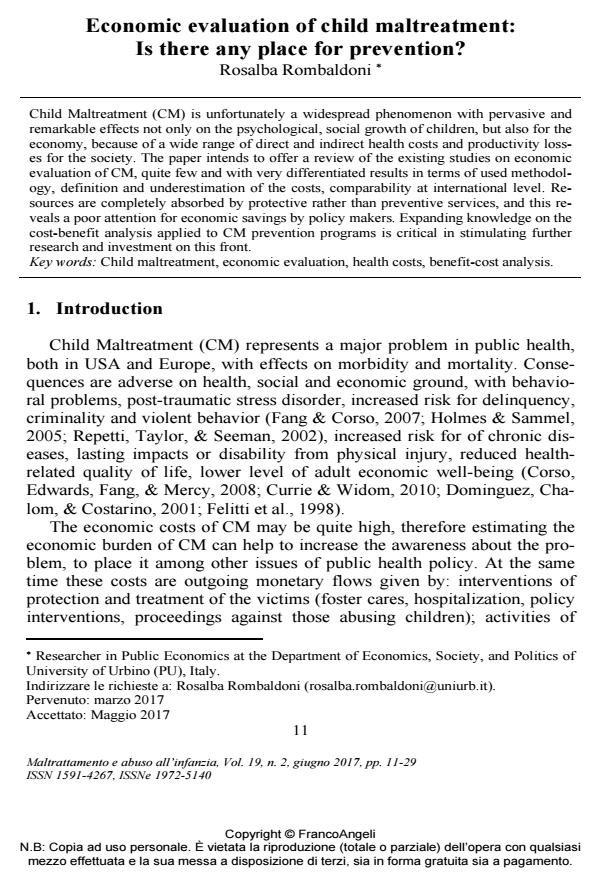Economic evaluation of child maltreatment: Is there any place for prevention?
Titolo Rivista MALTRATTAMENTO E ABUSO ALL’INFANZIA
Autori/Curatori Rosalba Rombaldoni
Anno di pubblicazione 2017 Fascicolo 2017/2
Lingua Inglese Numero pagine 19 P. 11-29 Dimensione file 212 KB
DOI 10.3280/MAL2017-002002
Il DOI è il codice a barre della proprietà intellettuale: per saperne di più
clicca qui
Qui sotto puoi vedere in anteprima la prima pagina di questo articolo.
Se questo articolo ti interessa, lo puoi acquistare (e scaricare in formato pdf) seguendo le facili indicazioni per acquistare il download credit. Acquista Download Credits per scaricare questo Articolo in formato PDF

FrancoAngeli è membro della Publishers International Linking Association, Inc (PILA)associazione indipendente e non profit per facilitare (attraverso i servizi tecnologici implementati da CrossRef.org) l’accesso degli studiosi ai contenuti digitali nelle pubblicazioni professionali e scientifiche
Child Maltreatment (CM) is unfortunately a widespread phenomenon with pervasive and remarkable effects not only on the psychological, social growth of children, but also for the economy, because of a wide range of direct and indirect health costs and productivity losses for the society. The paper intends to offer a review of the existing studies on economic evaluation of CM, quite few and with very differentiated results in terms of used methodology, definition and underestimation of the costs, comparability at international level. Resources are completely absorbed by protective rather than preventive services, and this re-veals a poor attention for economic savings by policy makers. Expanding knowledge on the cost-benefit analysis applied to CM prevention programs is critical in stimulating further research and investment on this front.
Parole chiave:Child maltreatment, economic evaluation, health costs, benefit-cost analysis.
- Child Abuse and Neglect Elena Acquarini, Vittoria Ardino, Rosalba Rombaldoni, (ISBN:978-1-80355-510-2)
Rosalba Rombaldoni, Economic evaluation of child maltreatment: Is there any place for prevention? in "MALTRATTAMENTO E ABUSO ALL’INFANZIA" 2/2017, pp 11-29, DOI: 10.3280/MAL2017-002002